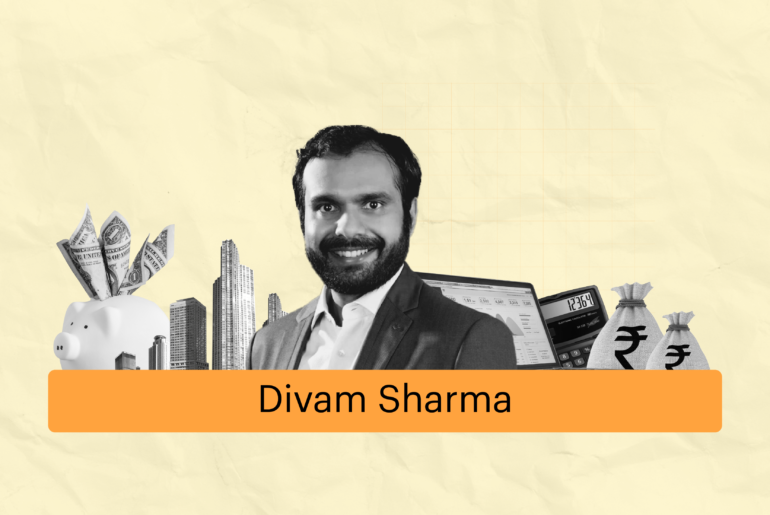Last Updated on May 9, 2023 by Anjali Chourasiya
Now that you know How To Prioritise Company or Industry Research Post Shortlisting, let’s see the important things you should look at while analyzing a sector and a company.
Selecting profitable companies to invest in
Simply put, we want to invest in a company that is
- Growing rapidly and can sustain growth for a long period of time,
- Is the leader/among top players in the industry/is on the path of becoming the leader,
- Is promoted by someone who is reliable, capable, and believes in sharing the profits with the shareholders,
- Where the product or service the company is offering is going to stay relevant even after decades in some form or other, and finally –
- The company is able to generate a good amount of cash flow (may not be true for cos that are in a high growth phase) and have a very good Return on Invested Capital (not a very good measure for asset-light business) and is available at a good price from which it can compound multifold in the coming years.
Research frameworks
If you observe carefully, all the points that I have mentioned above can be divided into 5 important parts of the research framework –
- Market opportunity and growth drivers
- Moat
- Management
- Risks
- Valuation
Start by understanding the basic question, i.e. which problem is the company trying to solve and how? What are the various products/ services offered by the company, and how does it differentiate its products from the competitors? What is the business model of the company?
Market opportunity and growth driver
- Start by understanding the size, structure, and dynamics of the industry
- What’s the total addressable market opportunity and its growth rate?
- How has the industry evolved over time?
- What’s the market share of the company, and how has it evolved?
- Share of organized vs unorganized – Higher the share of unorganized better the growth prospects for the organized players (Understand the reason why the industry is dominated by unorganized players, if that’s the case)
- Domestic vs exports – Margins and working capital cycle are different for domestic vs export business
- Is it a concentrated or fragmented industry? – Fragmentation leads to lower margins in most cases due to higher competition (Construct industry revenue and profit pool to understand this)
- Is it underpenetrated? If yes, then how is this under-penetration going to decrease in the future? – The higher the under-penetration, the higher the growth opportunity
- Is it a niche market or a mass-market product? – Margins and volume will differ significantly
- Are there any barriers to entry/ exit in the industry? How frequently a new player enters or exits the industry? – Explains the competitive intensity in the industry. The lower the barrier, the more difficult it is to maintain the existing position (for a company) in some cases.
- Entry barriers can be in the form of very high capital requirements (Eg. Telecom), very long payback period (path to profitability) (Eg. Life Insurance cos takes ~9-yrs to achieve breakeven level), advanced technological requirements, patents, government regulation like license requirement, etc.
- What’s the total addressable market opportunity and its growth rate?
As the margin profile and return ratios of any industry improve, a lot of new players start coming in (unless there are very strong entry barriers), which increases competition and hence reduces margin and return ratios.
- Understand the tailwinds and headwinds for that industry, i.e. factors that will help in growth /slow growth /degrowth of the industry.
- Always look for structural tailwinds.
- Are there any frequent regulatory interventions that severely affect the industry?
- Can a company grow faster than the industry? If yes, how and why?
- Is it because of acquisitions (inorganic growth), or is the company gaining market share from other players organically?
- Can the bottom line (Profit) grow faster than the topline(Revenue)? Understand the reason for this –
1. Is it because of the focus on high-margin products going forward – Look at the gross margin
2. Or Is it because of operating leverage? – See cost as % of revenue or compare year-on-year growth in revenue vs expense
3. Is it due to better technology?
4. Or any other reason
- Is the growth predictable? Can the company sustain this outperformance for a long period of time? – Track the capex plan and historical/guided asset turnover ratio to derive revenue, order book and mgmt., guidance to understand the growth prospects
- Understand the entire supply chain
- What’s the source of raw material?
- Imported or sourced locally
- Is the company dependent on a single supplier – If yes, this can become a major risk
- Is it seasonal, if yes then how are they managing demand and supply and hence the working capital,
- Is the company partially/completely backwards integrated? – Reduces supply chain disruption and leads to margin improvement
- Concentration among suppliers and customers, if any – Supplier concentration may lead to lower gross margin and risk in raw material sourcing (may affect working capital cycle), whereas customer concentration may affect revenue/business severely if that customer leaves, and it may also lead to lower operating margins as a customer might have some bargaining power.
- Bargaining power of suppliers and customers,
- Depends on concentration among suppliers and buyers – the higher the concentration, the lower the bargaining power
- How important is the product supplied by the company in the entire value chain and its contribution to the total cost of the product?
- Degree of value addition – the higher the value addition, the lower the bargaining power
- Switching cost – the higher the Switching cost, the lower the bargaining power
- Is it a B2B /B2C /B2G business? – Margin profile and return ratios are quite different among these three businesses (Eg. – Working capital can be very high for B2G business and are generally low for B2C business)
- Nature of the customer – Are they indifferent among products of different cos in the same industry, or is there some kind of stickiness to a particular company’s product? Are they price-sensitive, or don’t you mind paying a bit extra for quality? – Tells about the margin profile of the company; if customers are price-sensitive, then co might have a lower margin
- What are the different distribution channels like Multi-brand outlets, Exclusive brand outlets, franchises, e-commerce, etc.? – Margin profile can be different for each distribution channel (Check commission as a % of revenue, especially if it’s a push product)
- What’s the source of raw material?
To understand this part, go through Management Discussion and Analysis (a part of the annual report) of various companies in the industry, some industry reports or youtube videos on the industry, industry journals, interviews of industry experts, etc.
Moat/Competitive Advantage
- Can a new entrant take away the market share from your company overnight?
- How valuable is the company’s product to their customer? Does the non-existence of that product affect the customer?
- Are there any substitutes available? Is there any threat from substitutes?
- Can the company raise the price of the product without losing its customers (also known as pricing power)?
- Moat can be in various forms-
- Economies of scale – Better margins as compared to peers due to scale (Eg. Asian Paints)
- Network effect (Eg. Platform businesses like Instagram, IEX, etc.)
- High customer switching cost (Eg. RTA business- CAMS)
- Strong Brand recall value
- Everyone knows the brand (Very high mind share) – Check the Ad spending as a % of revenue or commission paid to distributors as a % of revenue.
- Customers are willing to pay more (can be due to very good products or after-sales services provided by the company)
- Duplicate exists (Eg. Nike)
- Product name is replaced by brand name (Eg. Colgate)
- Customer Trust the Brand (Eg. Tata group)
- Patents (Eg. Gillette)
- Strong Supply chain (Eg. Westlife is able to deliver the same taste to customers every time due to a very strong supply chain)
Quantitative ways of looking at Moats are –
- Very high market share (both revenue as well as profit) – See historical trends to understand if the moat is sustainable or not.
- High customer retention ratio – See historical trends as well.
- Very high margin and return ratios – This can be due to a very high gross margin because of a higher share of value-added products, operating leverage due to economies of scale, Negative or very low working capital cycle, better asset productivity as compared to peers, etc.
The competitive advantage should be SUSTAINABLE.
To understand this part, go through all the Management Discussion and Analysis (a part of the annual report) and conference calls of the company and talk to customers and distributors of the company and its peers.
PS – Stay tuned as we are going to cover the remaining part of the research framework in an upcoming article.
- Research Framework 1O1 – Part 1 - Apr 19, 2023
- How To Prioritise Company or Industry Research Post Shortlisting? - Dec 1, 2022
- How To Shortlist Good Companies Out of 5000+ Listed Companies? - Oct 28, 2022




